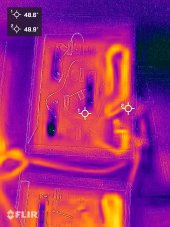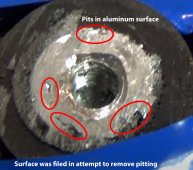Solar Steve
New Member
Wondering if anyone else on the forum has seen this - after operating this 4s pack daily for about a year (in series with another 4s pack), I've noticed this white corrosion on the heat shrink and in particular on the thermocouple leads from the BMS, which has the insulation partially eaten away, although none of the other wires are affected. I can also smell a faintly sweet smell, which makes me suspect electrolyte leakage somehow, but the cells and in particular the vents appear undamaged. Charging rates in the system never exceed about 0.25C, and the cells appear to still work normally. If this is electrolyte leakage, what are typical leak points?





